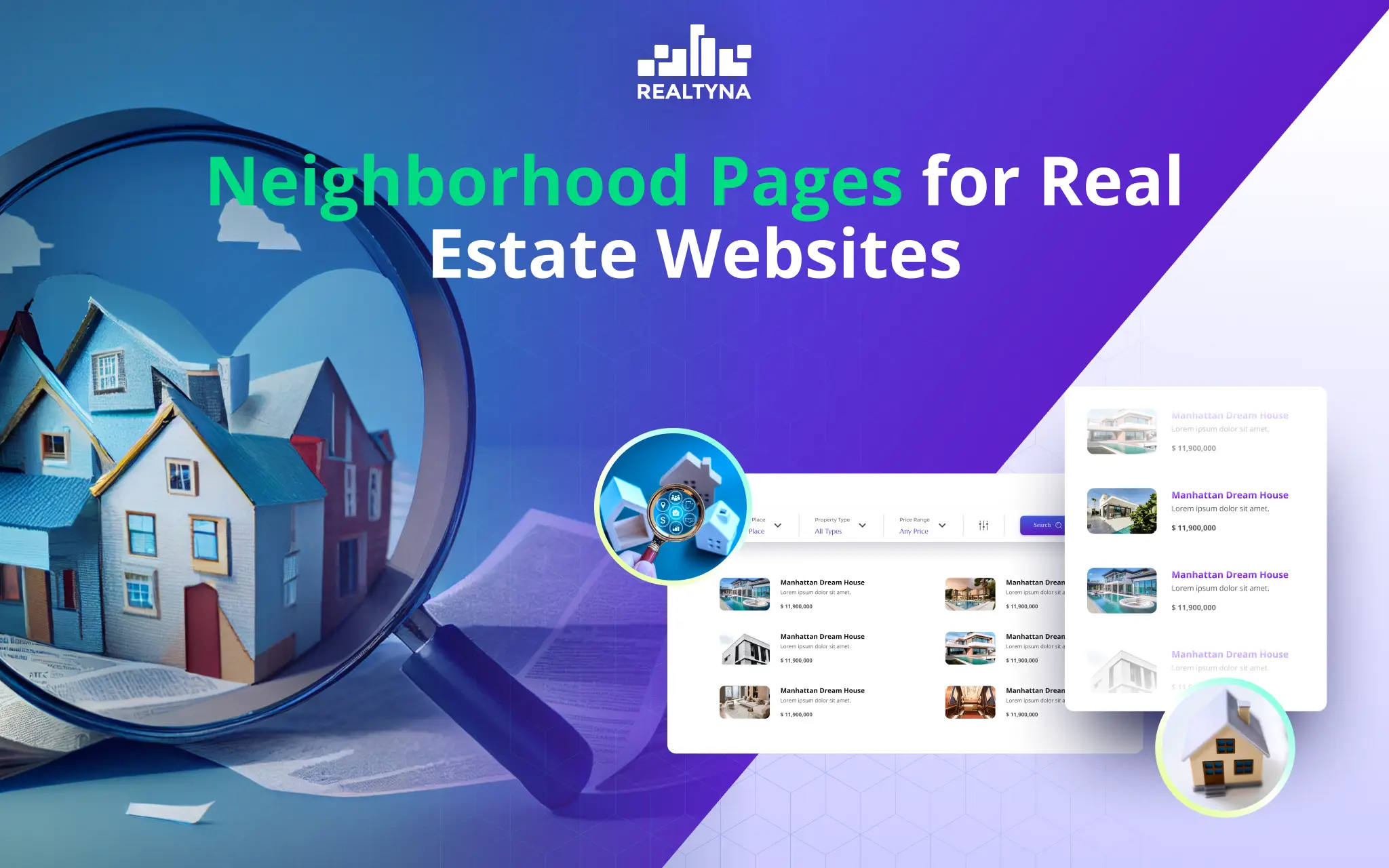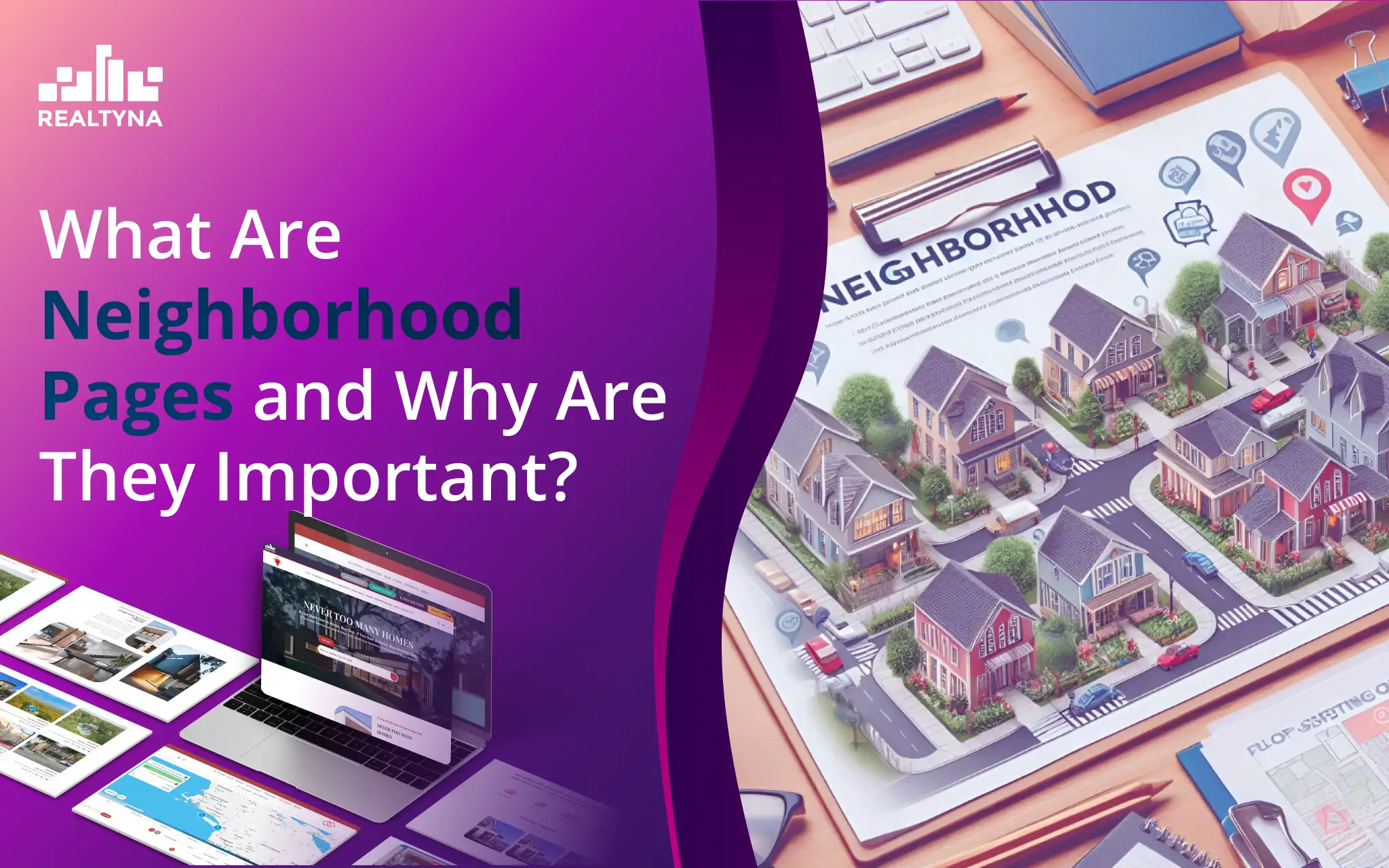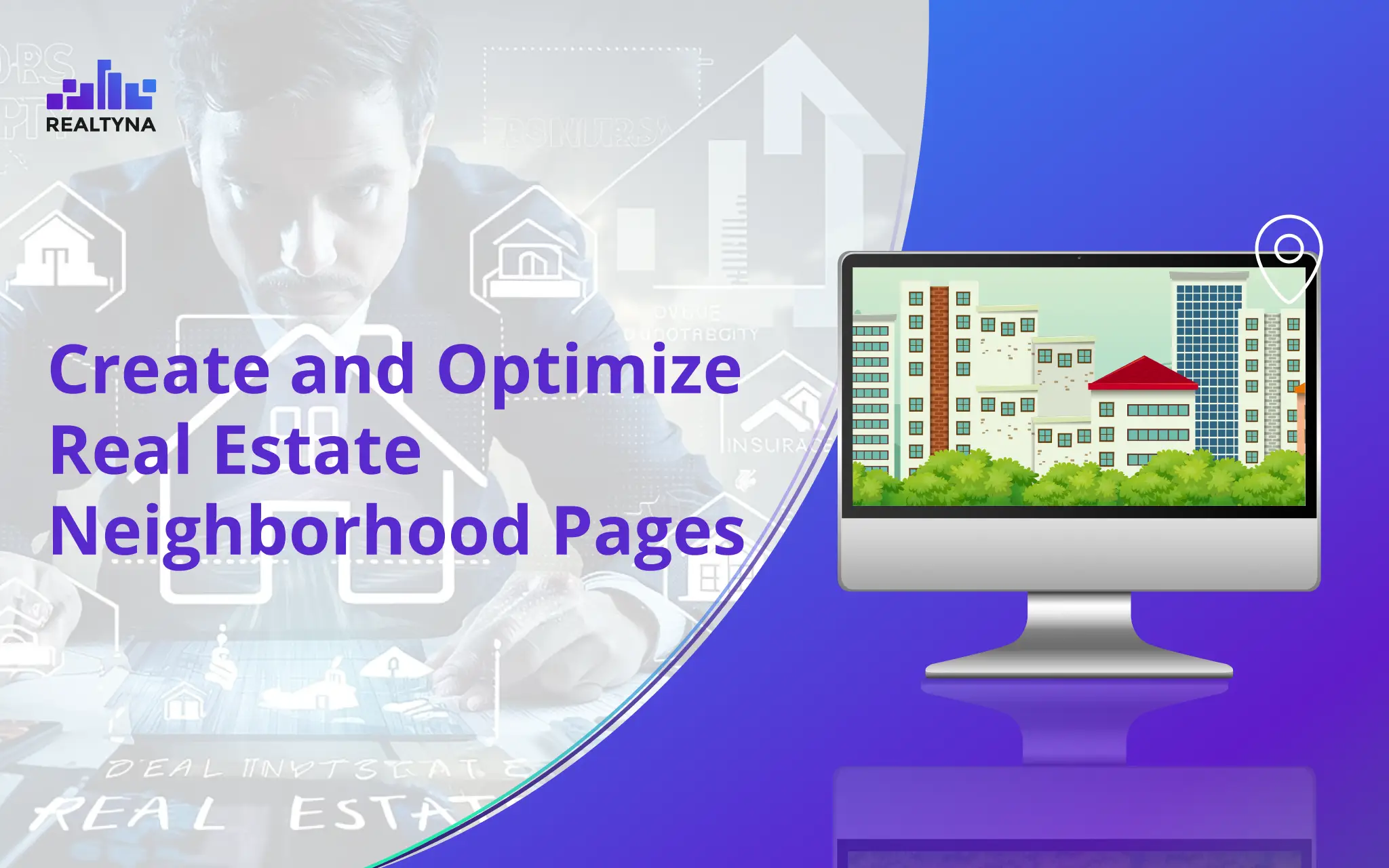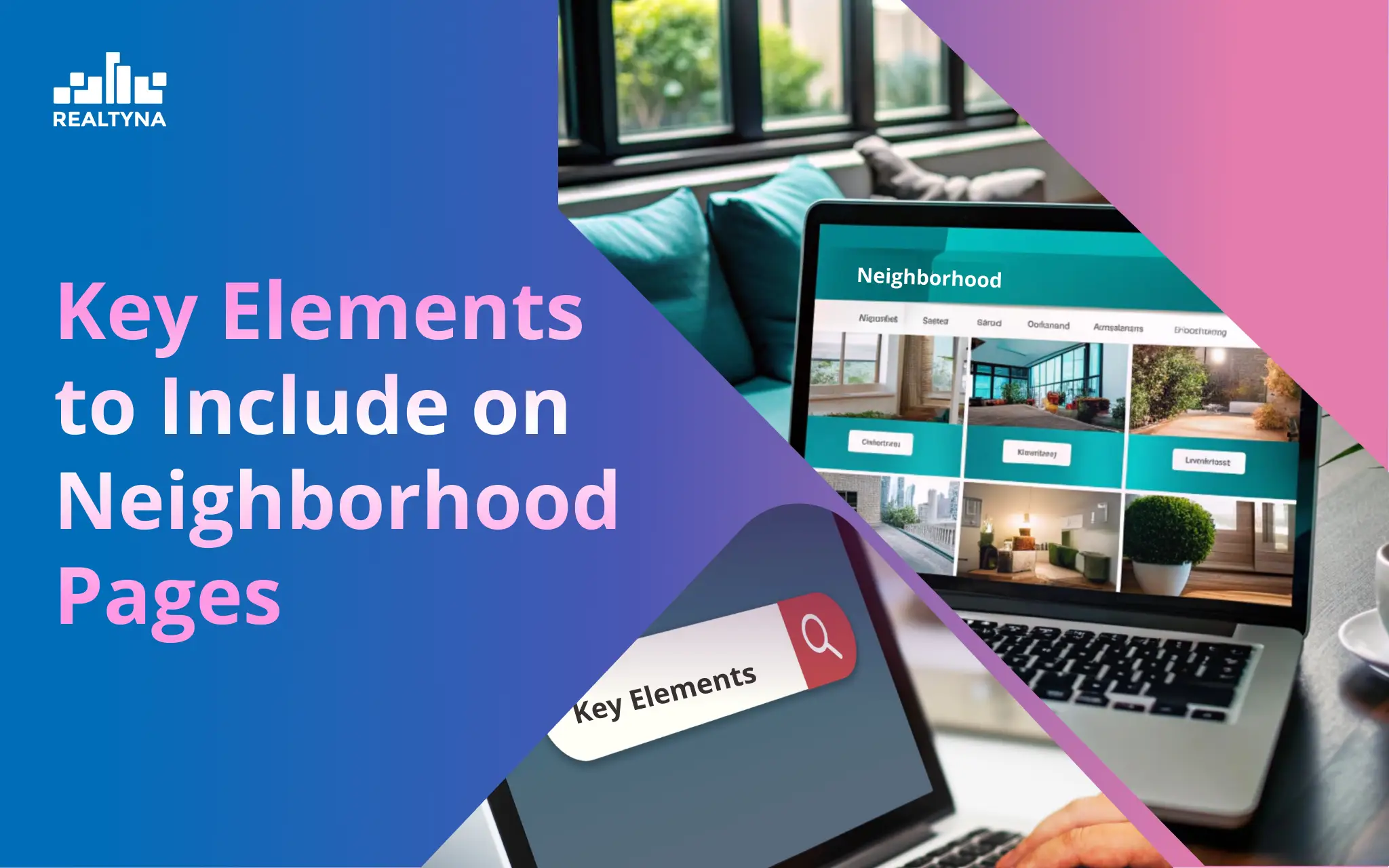
Neighborhood Pages for Real Estate Websites
Let me clear this up for you, you can’t get much traffic from your website if you don’t optimize your neighborhood pages.
As a SEO specialist who works on thousands of websites across the US, I’m sure there won’t be any big success for your website IF you ignore having and optimizing your neighborhood pages.
In fact, after having strong property pages, neighborhood pages are the next important thing you should care about.
I worked on so many real estate websites and believe me most of them don’t have any pages for their neighborhood.
I didn’t see any article about this important subject, so I decided to write one. Let’s start.
What Are Neighborhood Pages and Why Are They Important?

Neighborhood pages are specialized landing pages on real estate websites that provide detailed information about specific areas within a city or region. It can be a large city like Texas, a small neighborhood on Hilton Head Island, or a famous suburb like Brookline.
If you are using our WPL platform, you can purchase the neighborhood add-on to implement these pages rapidly.
These pages offer insights into local amenities, schools, crime rates, and property values. each one of these pages has their exclusive listings.
Creating well-optimized neighborhood pages can boost your website’s search rankings for location-specific queries.
These pages allow you to target long-tail keywords that potential clients are likely to use when searching for homes in particular areas.
By incorporating relevant local terms and providing useful information, you increase the chances of your website appearing in search results for neighborhood-related queries.
What are the neighborhood queries? Let me give you some examples:
- Homes for sale in Los Angeles, CA
- Homes for sale in Miami, FL
- Rental homes in New York City
- Condo for sale in Chicago, IL
- Townhouses for sale in Boston, MA
- Beachfront properties for sale in Florida
- Homes for sale with a pool in Phoenix, AZ
- Affordable homes for sale in Houston, TX
- Homes for sale with a view in Seattle, WA
- Farmhouse for sale in Vermont
Remember: Neighborhood keywords might include terms that are related to the property type, price, or other things, but the thing is, all of these keywords are kinda considered long-tail and neighborhood keywords. Learn more about keywords at real estate keywords.
Create and Optimize Real Estate Neighborhood Pages

For each one of the areas that you are working on, you need to have an exclusive page, with exclusive information, content, reports, and listings.
This enhanced user experience can lead to longer site visits, lower bounce rates, and ultimately, more leads for your real estate business.
Create Comprehensive, Unique Content
When creating neighborhood pages, focus on creating in-depth, original content that showcases your local expertise.
Include detailed information about the area’s history, amenities, schools, and lifestyle.
Highlight unique features that set the neighborhood apart, such as local events, hidden gems, or community initiatives.
Time to do SEO & Marketing things
Optimize your neighborhood pages for local search by incorporating location-specific keywords naturally throughout the content.
Use the neighborhood name in your page title and meta descriptions. Include a Google Map embed of the area and ensure your business’s NAP (Name, Address, Phone number) information is consistent across all pages.
Consider creating separate pages for sub-neighborhoods or districts to target more specific search queries.
Implement an internal link-building strategy for all of your pages, and connect them like a chain.
Enhance your neighborhood pages with high-quality images and videos that showcase the area’s best features.
Ensure your pages are mobile-responsive and have fast loading times to improve user experience and search engine rankings.
Incorporate easy-to-use navigation and clear calls-to-action to guide visitors towards contacting you or exploring property listings.
Key Elements to Include on Neighborhood Pages

Comprehensive Area Overview
Begin your neighborhood page with a detailed overview of the area. This should include the neighborhood’s history, its unique character, and any notable landmarks or attractions.
Demographic and Lifestyle Information
Provide insights into the neighborhood’s demographics and lifestyle. Include data on population, age distribution, income levels, and education.
Real Estate Market Analysis
Offer a current snapshot of the local real estate market. Include median home prices, average days on the market, and recent sales trends.
Local Amenities and Services
Create a comprehensive list of nearby amenities and services. Include schools with their ratings, parks, shopping centers, restaurants, healthcare facilities, and public transportation options.
Tracking and Measuring Neighborhood Page Performance
![]()
To ensure your neighborhood pages are effectively driving traffic and conversions, it’s crucial to implement robust tracking and measurement strategies. By analyzing key metrics, you can optimize your pages for better performance and ROI.
Implement Analytics Tools
Start by setting up Google Analytics and Google Tag Manager on your website. Configure goals to track important actions like property inquiries, newsletter sign-ups, or virtual tour requests.
Use UTM parameters to monitor traffic sources and campaign effectiveness for each neighborhood page.
lots of tools can help you in order to optimize your pages, we named more than 10 at real estate SEO tools.
Monitor Key Performance Indicators (KPIs)
Focus on metrics that indicate engagement and conversion:
- Organic traffic growth
- Time on page and bounce rate
- Click-through rates on property listings
Conduct A/B Testing
Experiment with different layouts, content types, and calls to action on your neighborhood pages.
Use A/B testing tools to compare variations and determine which elements resonate best with your audience.
That was all for now.
Consistently updating your pages with fresh, relevant information will keep both search engines and house hunters coming back.
With patience and persistence, your optimized neighborhood pages can become powerful sources to get traffic from.
Thanks for reading.


Sorry, the comment form is closed at this time.